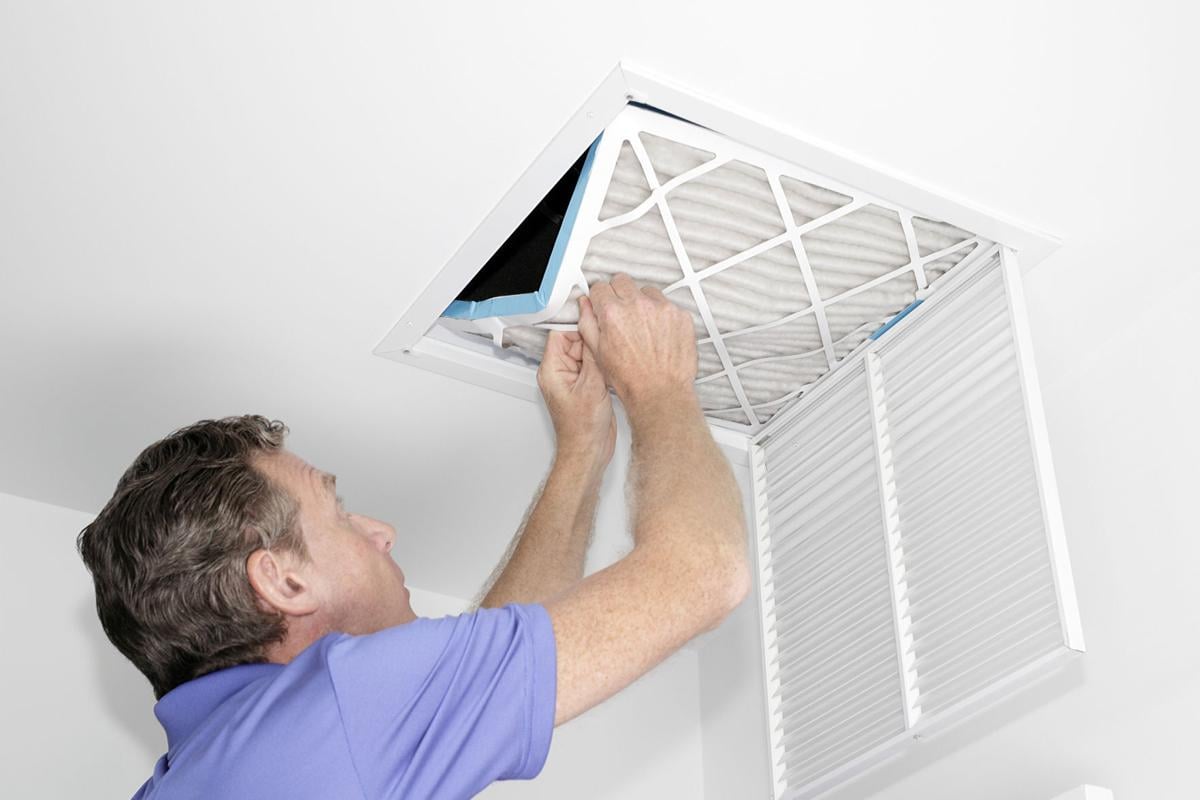When is the best time to service my heating unit?
Answer: The ideal time to get your heating system ready for the next season is in the fall; particularly when the temperatures dip below 80 degrees. This will ensure it runs properly when the low temperatures hit.
Q: What should I do to maintain my heating and cooling system between seasons?
A: There are many inexpensive improvements you can make to provide better comfort, use less energy, and improve the air quality in your home.
1. Replace or clean your air filter — Like your car, your HVAC filter is key to keeping your unit’s components running smoothly and efficiently. Usually, filters are located at the return air grill in the main room in the house.
2. Check your thermostat — It’s important to check how well your thermostat is working. Does it respond as expected and keep your home at the temperature you set? If you have an older thermostat, you may want to switch to a programmable thermostat as it is more efficient and usually saves money on monthly utility bills.
3. Maintain the area around your outside unit — Make sure the unit is clear of plants, rocks, tree branches, and other debris summer monsoons may have thrown near your A/C unit. It’s important to keep your HVAC unit clear to allow enough airflow. Two to 3 feet of space in each direction should do the trick.
4. Clean your interior vents and grilles — Check all the vents and grilles in your home and dust or vacuum them to help with maximum airflow inside your home. Regular cleaning of vents and grilles can improve the air quality in your home, particularly homes with young children, older relatives, or individuals who have allergies.
5. Schedule preventative maintenance — By scheduling regular professional maintenance visits, you can feel good knowing one of the most important systems in your home is running well. Regular maintenance extends the life of your unit and helps keep your utility bills from rising due to inefficiencies in operation.
Q: Will adding insulation in my attic reduce my energy bill?
A: Your attic/crawl space probably already has some insulation. But if it was installed years ago when the home was built, particularly before 2004, it could have deteriorated, or the builder might have installed just enough to satisfy the building code of the day. Today, you need more protection from the heat because air conditioning costs are so high. When installing attic insulation there are two things you need:
1. The attic insulation when properly installed should reach a level of R-38. The R-value measures the thickness of the insulation. You do not need to exceed the R-40 rating for attic insulation. At that point, you are going beyond the economic “cost vs. value” ratio.
2. Properly engineered attic ventilation. You don’t need a motor-driven attic ventilator, overdone insulation that’s any higher than R-38, an extra layer of protection in the form of a radiant barrier, or another product that promises greater energy savings.
Q: How do I know if there is adequate insulation in the attic?
A: Stick your head up there and look. If you see a lot of lumber or drywall, and not a continuous sea of loose-fill insulation without mountains or valleys, you need insulation. Other signs of poor insulation include:
- Higher utility bills — damaged insulation or areas where insulation is worn away allows the conditioned air to escape outside, causing the system to work harder.
- Drafts throughout your home —Hot and cold spots or drafty areas indicate the insulation is worn out. Fill in those spots with new insulation for more consistent temperatures throughout every room in your home.
- Recent water damage — If you’ve had leaks in your roof or water damage in your walls, the insulation in these areas is likely wet. Unless you have blown-in insulation, water will ruin the insulation in these areas and possibly lead to biological growth. Remove and replace it with new insulation.
- Pest infestation —Mice, snakes and bats can make their nests in the warmth of your home’s insulation. They will chew through the insulation and leave behind fecal matter and urine, which can contaminate the insulation and indoor air supply. Upgrading the insulation is the best course of action in this situation.





